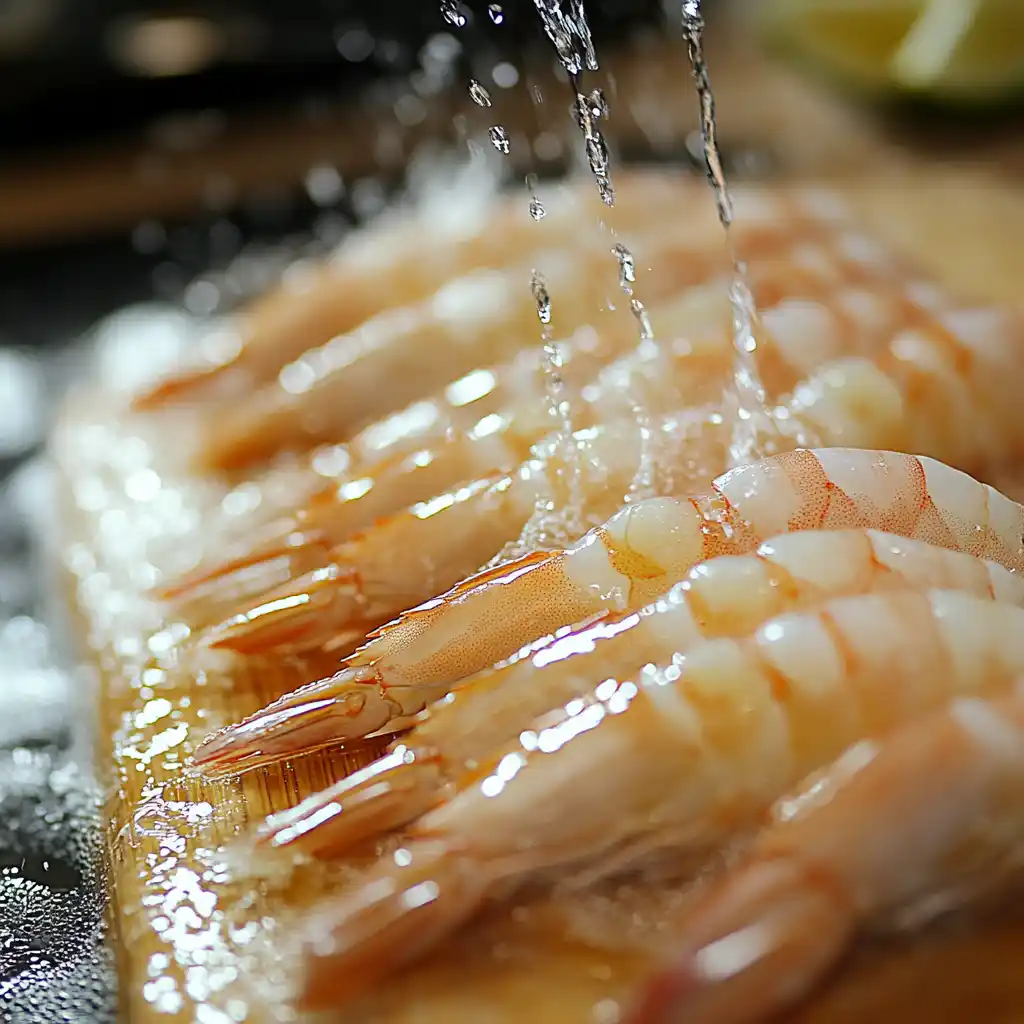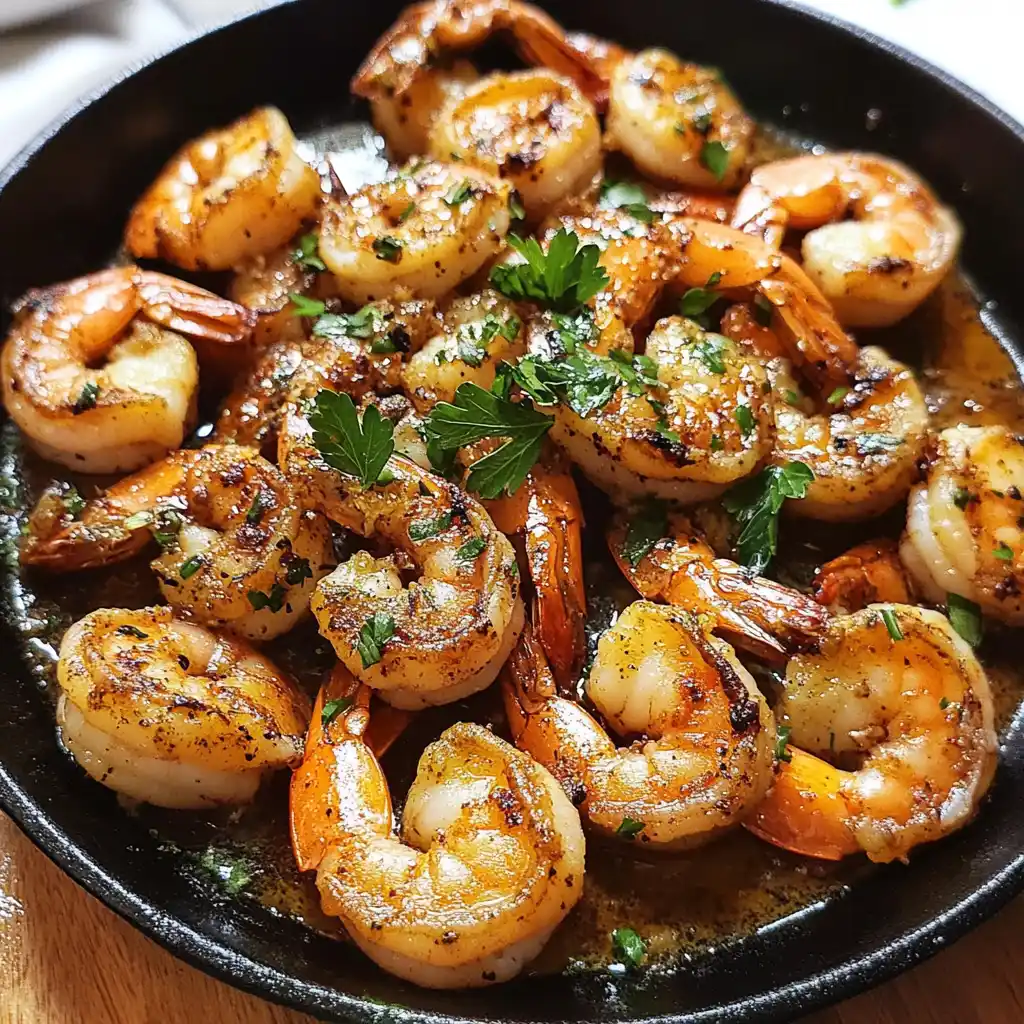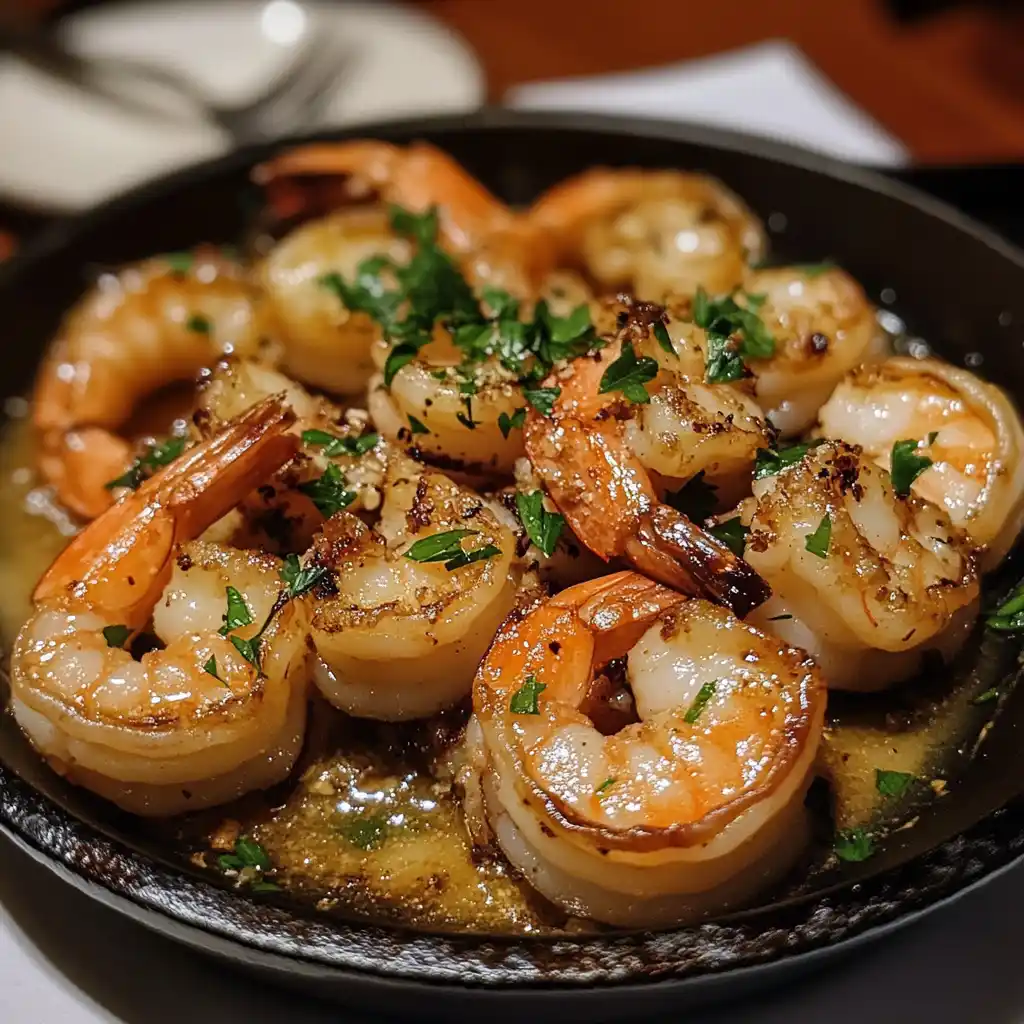Shrimp lovers, you’re in for a treat. If you’ve ever craved a quick, flavorful seafood dish that doesn’t skimp on taste or elegance, sautéed shrimp is your go-to option. Whether you’re whipping up a weeknight dinner or impressing guests, shrimp sautéed in a sizzling skillet with garlic, butter, herbs, or spices can go from pan to plate in under 15 minutes. But nailing the perfect texture and taste? That takes just a bit more know-how.
In this ultimate guide, we’ll walk you through everything—from choosing the right type of shrimp and prepping it like a chef, to selecting whether to cook in oil or butter, and exploring mouthwatering variations like garlic lemon or spicy Cajun. We’ll also dive into side dish pairings, health benefits, and even what to do with leftovers. Plus, we’ve packed in answers to the most common questions people ask about sautéed shrimp.
Let’s dive into Part 1 and get a deeper understanding of why sautéed shrimp deserves a spot in your recipe rotation.
Table of Contents
Introduction to Sautéed Shrimp
What is Sautéed Shrimp?
Sautéed shrimp is one of those deceptively simple dishes that can taste like it came from a five-star kitchen—if done right. At its core, sautéing shrimp means quickly cooking it in a small amount of fat—typically butter, oil, or a mix of both—over medium to high heat. This technique locks in the natural sweetness of shrimp while letting you build layers of flavor with garlic, lemon juice, chili flakes, herbs, and more.
What makes sautéed shrimp such a standout is its speed and versatility. In less than 10 minutes, you can go from raw shrimp to a rich, savory meal component that works beautifully on its own or paired with rice, pasta, salads, or even tacos. From a nutritional standpoint, shrimp is low in fat and calories but packed with protein, making it an ideal option for healthy eating without sacrificing flavor.
Shrimp also absorbs flavor fast, which makes it ideal for sautéing. The exterior crisps up beautifully while the inside stays tender—especially when using fresh or properly thawed frozen shrimp. Just make sure you don’t overcook it; two to three minutes per side is all it takes for most medium to large shrimp.
Why Sautéed Shrimp is a Must-Try Seafood Dish
There are plenty of ways to cook shrimp—grilling, steaming, baking—but sautéing is unmatched in terms of flavor depth, texture, and time-efficiency. Here’s why it stands out:
- Speed: In under 10 minutes, sautéed shrimp is done and ready to serve.
- Flavor: Searing in a hot pan builds up that golden crust and lets the seasonings really shine.
- Control: Unlike baking or boiling, you control the texture and moisture, ensuring juicy shrimp every time.
- Customizable: You can go classic with garlic and lemon, or bold with chipotle and smoked paprika.
Plus, you don’t need any fancy equipment—just a pan, a stove, and a few basic ingredients. With a little practice, sautéing shrimp becomes second nature, offering a go-to protein that works equally well on a busy Tuesday night or at your next dinner party.
Choosing the Best Shrimp for Sautéing
Fresh vs. Frozen Shrimp: Which is Better?
When it comes to preparing the perfect sautéed shrimp, the debate between fresh and frozen shrimp is an important one. The truth? Most “fresh” shrimp at the grocery store is previously frozen. Unless you’re buying directly from a coastal fish market, frozen shrimp is actually the fresher option—it’s flash-frozen shortly after being caught, locking in moisture and flavor.
Here’s how they compare:
| Type | Pros | Cons |
|---|---|---|
| Fresh | Convenient, already thawed | Often less fresh than frozen |
| Frozen | More control over thawing, better texture retention | Needs time to thaw before cooking |
Best practice? Buy frozen shrimp in bulk, preferably deveined and shell-on or peeled, and defrost them in the fridge overnight or under cold water in a pinch. Avoid thawing at room temperature—it ruins the texture.
Also, look for wild-caught over farm-raised shrimp if possible. Wild-caught varieties tend to have better flavor and firmer texture, making them ideal for sautéing where every second of sear time matters.
Sizing Matters: Small, Medium, or Jumbo?
Size directly affects cooking time and texture. You’ll often see shrimp labeled by a number like “16/20,” which means there are 16 to 20 shrimp per pound. Here’s a quick guide:
| Label | Shrimp per Pound | Best Use |
|---|---|---|
| Jumbo (16/20) | 16-20 | Great for standalone dishes |
| Large (21/25) | 21-25 | Perfect balance for sautéing |
| Medium (31/40) | 31-40 | Ideal for pasta or rice dishes |
| Small (51/60) | 51-60 | Best for salads and tacos |
For sautéing, large to jumbo shrimp are preferred. They’re meaty enough to hold their own and won’t overcook as quickly as smaller shrimp.
Also, decide on peeled vs. shell-on. Peeled is easier and quicker to cook, while shell-on keeps the shrimp juicier. For fast meals, go peeled and deveined. For flavor bombs, leave the shell on and remove it after cooking.
Now that you know what shrimp to choose, it’s time to prep them for maximum flavor.
Prepping Shrimp Like a Pro
Cleaning and Deveining Shrimp Properly
Before you even think about tossing shrimp into a hot skillet, proper prep is essential. Not only does it ensure food safety, but it also improves the texture and flavor of your sautéed shrimp dish.
Here’s a quick step-by-step guide to cleaning and deveining shrimp:
- Rinse Under Cold Water: Even pre-packaged shrimp can carry grit or small shell fragments.
- Peel the Shell (Optional): For sautéing, peeled shrimp cooks more evenly and absorbs seasoning better. If you’re keeping the shell on for added flavor, just snip the back for deveining.
- Devein the Shrimp: Using a paring knife or shrimp deveiner, make a shallow cut along the back of the shrimp and lift out the dark vein (the digestive tract).
- Pat Dry: Moisture causes steaming, not searing. Always pat your shrimp dry with paper towels before cooking.
Pro tip: If your shrimp have a slight ammonia smell, toss them—they’re spoiled. Fresh or properly frozen shrimp should smell like the sea, not like chemicals.
Marinating Tips for Maximum Flavor
While shrimp naturally has a sweet, briny taste, a good marinade can elevate it to something extraordinary. However, because shrimp is delicate, you don’t want to overdo it.
Keep marination time short—15 to 30 minutes tops. Over-marinating can break down the shrimp’s texture and make it mushy.
Here are a few go-to marinades for sautéed shrimp:
| Marinade Type | Ingredients | Best Use |
|---|---|---|
| Classic Garlic Lemon | Olive oil, garlic, lemon juice, parsley | All-purpose sautéed shrimp |
| Spicy Cajun | Olive oil, Cajun seasoning, paprika, cayenne | Tacos, rice bowls, spicy entrées |
| Asian-Inspired | Soy sauce, sesame oil, ginger, garlic, honey | Noodle dishes, stir-fry variations |
| Mediterranean | Olive oil, oregano, thyme, lemon zest, garlic | Pita wraps, pasta, or grilled veggies |
Want your shrimp extra juicy? Dry brining works wonders. Combine salt and a pinch of baking soda, then let shrimp rest in the fridge for 15 minutes. This method improves texture and enhances browning during sautéing.
Now that your shrimp is clean, dry, and flavorful, let’s look at one of the biggest decisions: cooking it in butter or oil.

Cooking Methods: Butter vs. Oil
Is It Better to Sauté Shrimp in Oil or Butter?
When cooking sautéed shrimp, one of the biggest flavor-impacting choices you’ll make is what fat to use: butter, oil, or a mix of both. This decision can determine whether your dish turns out rich and savory—or ends up burnt or bland.
Let’s break it down:
Butter gives sautéed shrimp a luxurious, silky texture and deep, savory flavor. When butter browns, it adds a nutty richness that complements shrimp beautifully. But there’s a catch—its low smoke point (around 300°F) means it can burn quickly, especially over high heat.
Oil, on the other hand, especially neutral high-smoke-point oils like avocado or canola oil, is ideal for searing. It ensures your sautéed shrimp gets that crave-worthy golden crust without scorching.
So, what’s the best solution for flavorful, perfectly cooked sautéed shrimp? Use both butter and oil. This combo lets you sear with confidence and finish with flavor.
| Cooking Fat | Smoke Point | Best Use Case for Sautéed Shrimp |
|---|---|---|
| Unsalted Butter | ~300°F | Finish cooking for flavor and silky texture |
| Olive Oil | ~375°F | Mediterranean-style sautéed shrimp with garlic and herbs |
| Avocado Oil | ~500°F | High-heat searing without overpowering the shrimp taste |
| Clarified Butter | ~450°F | Combines butter taste with high heat tolerance |
Combining Butter and Oil for Perfect Sautéed Shrimp
If you want your sautéed shrimp to be juicy inside with a crisped, flavorful outside, combining butter and oil is the answer. This method ensures you get a high-temperature sear with the luxurious finish of melted butter and aromatics.
Here’s how to do it:
- Heat 1 tablespoon of oil (like olive or canola) in a large skillet over medium-high heat.
- Once the oil shimmers, add your seasoned shrimp in a single layer. Let the shrimp cook undisturbed for 1–2 minutes.
- Flip the shrimp, and when they’re nearly done, toss in a tablespoon of butter with garlic, red pepper flakes, or fresh herbs.
- Stir to coat, letting the butter baste the shrimp and finish cooking.
This creates sautéed shrimp that’s richly flavored, tender, and cooked to perfection—every time.
Whether you’re aiming for something light or indulgent, mastering this fat balance will elevate your sautéed shrimp game from basic to restaurant-level.
For a refreshing non-alcoholic pairing, check out this iced coffee guide—perfect with shrimp brunches or light lunches.
Flavor-Packed Sautéed Shrimp Recipes
Classic Garlic Butter Sautéed Shrimp
Nothing beats the timeless flavor of garlic butter sautéed shrimp. It’s simple, aromatic, and loaded with savory richness that works in just about any dish. The garlic infuses the butter as it melts, creating a luscious coating that clings to the shrimp, making every bite irresistible.
Ingredients:
- 1 lb large shrimp, peeled and deveined
- 3 tbsp unsalted butter
- 4 cloves garlic, minced
- Salt and black pepper to taste
- 1 tbsp fresh lemon juice
- 1 tbsp chopped parsley
Directions:
- Heat butter in a large skillet over medium heat.
- Add garlic and cook for 30 seconds until fragrant.
- Toss in shrimp, season with salt and pepper, and sauté 2–3 minutes per side.
- Finish with lemon juice and parsley.
Spicy Cajun Sautéed Shrimp
Turn up the heat with this bold, flavor-packed Cajun sautéed shrimp. This Southern-inspired version is great for tacos, rice bowls, or simply served with a slice of crusty bread.
Ingredients:
- 1 lb shrimp, cleaned
- 2 tbsp olive oil
- 1 tsp Cajun seasoning
- 1/2 tsp smoked paprika
- 1/4 tsp cayenne pepper
- Fresh lemon wedges for garnish
Directions:
- Toss shrimp in Cajun seasoning, paprika, and cayenne.
- Heat olive oil in a skillet over medium-high heat.
- Sauté shrimp 2 minutes per side until slightly charred and cooked through.
- Serve with lemon wedges.
Sautéed Shrimp with White Wine and Lemon
If you’re craving something bright and elegant, this lemon and white wine sautéed shrimp is just what you need. It’s light, zesty, and perfect for spring or summer meals.
Ingredients:
- 1 lb shrimp
- 2 tbsp olive oil
- 1/4 cup dry white wine
- Zest and juice of 1 lemon
- 2 cloves garlic, sliced
- Salt and cracked pepper
Directions:
- Heat oil and garlic in skillet until fragrant.
- Add shrimp, season, and sauté for 2 minutes.
- Pour in wine and lemon juice, simmer until reduced and shrimp is opaque.
- Garnish with lemon zest and cracked pepper.
These three flavor-packed variations showcase just how adaptable sautéed shrimp can be. Whether you’re going rich, spicy, or zesty, there’s a version here to satisfy every craving.
Up next, let’s explore the best side dishes and pairings that elevate sautéed shrimp into a complete and satisfying meal.

If you’re a fan of bold, spicy flavors like Cajun or paprika, you’ll love these spicy meatball recipes—great inspiration for shrimp seasoning too.
What to Serve with Sautéed Shrimp
Best Side Dishes for Sautéed Shrimp
Pairing your sautéed shrimp with the right sides can turn a quick skillet dish into a balanced, restaurant-quality meal. Since sautéed shrimp carries bold flavors—especially when cooked in garlic, lemon, or Cajun spices—your sides should either complement or balance that intensity.
Here are some top-performing pairings:
| Side Dish | Description | Best With |
|---|---|---|
| Garlic Butter Rice | Fluffy rice infused with butter and garlic | Classic sautéed shrimp |
| Parmesan Polenta | Creamy and cheesy, balances spicy Cajun shrimp | Cajun-style shrimp |
| Lemon Herb Couscous | Light and fluffy with citrus notes | White wine sautéed shrimp |
| Roasted Asparagus | Adds crispness and earthy flavors | Any variation |
| Grilled Corn Salad | Sweet, smoky, and crunchy—great contrast | Spicy sautéed shrimp |
| Pasta with Olive Oil | Light pasta toss works as a neutral base | Mediterranean shrimp |
Wine and Beverage Pairings
Pairing beverages with sautéed shrimp enhances the flavors and brings out subtleties in your dish. Whether you’re going for something casual or upscale, there’s a drink that suits every shrimp recipe.
Best wine pairings:
- Chardonnay (unoaked): Smooth and citrusy, ideal for garlic lemon shrimp.
- Sauvignon Blanc: Crisp and acidic, pairs well with white wine or herbed shrimp.
- Rosé: Balanced and refreshing, great with Cajun and spicy shrimp.
Non-alcoholic pairings:
- Sparkling water with lemon or cucumber
- Ginger beer (for spicy variations)
- Iced herbal teas with citrus
When in doubt, light and refreshing drinks work best to cut through the richness of butter or oil in your sautéed shrimp.
Pairing the right side and drink can elevate even the simplest sautéed shrimp recipe. Whether you’re entertaining or just making a fast meal, these combinations add variety, texture, and balance.
Next, we’ll look at how sautéed shrimp fits into a healthy lifestyle, including its nutritional benefits.
For a low-carb side dish that pairs beautifully with sautéed shrimp, try this creamy mashed cauliflower instead of traditional rice or potatoes.
Health Benefits and Nutritional Value
Is Sautéed Shrimp Healthy?
Absolutely. One of the best reasons to add sautéed shrimp to your meal rotation is how nutrient-rich and low-calorie it is. Shrimp is naturally high in lean protein, low in fat, and packed with key nutrients like iodine, selenium, and vitamin B12—without adding many calories to your plate.
Let’s break it down:
| Nutrient (per 4 oz cooked shrimp) | Amount | Benefits |
|---|---|---|
| Calories | ~100 | Light, low-energy protein source |
| Protein | ~23g | Essential for muscle repair and growth |
| Total Fat | <2g | Mostly unsaturated, heart-friendly |
| Iodine | 35% DV | Supports thyroid and brain health |
| Selenium | 48% DV | Acts as a powerful antioxidant |
| Vitamin B12 | 80% DV | Aids nerve function and energy |
Sautéed shrimp becomes even healthier when cooked in olive oil or avocado oil rather than heavy cream sauces. Adding lemon, garlic, or herbs not only enhances taste but also packs in extra antioxidants.
If you’re following a low-carb, keto, or Mediterranean diet, sautéed shrimp is an ideal match. It’s filling without the carbs, and easy to pair with vegetables or lean grains.
Low-Calorie, High-Protein Benefits
Whether you’re aiming to lose weight, gain lean muscle, or maintain a balanced diet, sautéed shrimp fits all those goals. It’s high in protein, which helps with satiety (feeling full), and that makes it a smart alternative to fattier meats like pork or beef.
In fact, sautéed shrimp recipes prepared with just olive oil, lemon, and herbs can stay well below 300 calories per serving, making them great for meal prepping or light dinners.
And thanks to its versatility, sautéed shrimp can be made spicy, savory, or citrusy—without relying on processed ingredients or added sugars.
Pro tip: Skip breading or heavy sauces if you’re looking to keep it clean and lean. Instead, opt for quick pan-sautéing with aromatics and healthy fats.
By including sautéed shrimp regularly in your weekly meals, you’ll enjoy a flavor-packed protein source that’s as healthy as it is delicious.
Next, let’s take a look at common mistakes people make when sautéing shrimp—and how to avoid them for flawless results every time.
Common Mistakes to Avoid
Overcooking Shrimp: How to Get It Just Right
If there’s one mistake that ruins perfectly good sautéed shrimp, it’s overcooking. Shrimp cooks fast—really fast. Just 2–3 minutes per side is all it takes, especially when sautéing over medium-high heat.
Here’s how to tell when your sautéed shrimp is done:
- It turns opaque and takes on a bright pink color with red tails.
- The shrimp curls into a loose “C” shape—a tight curl (like an “O”) usually means it’s overcooked.
- The texture should be firm but springy, not rubbery or tough.
Avoid the temptation to keep shrimp in the pan longer “just to be sure.” Remember: residual heat keeps cooking shrimp even after it’s off the stove, so always remove it just as it turns pink.
| Cooking Time (per side) | Shrimp Size | Ideal Texture |
|---|---|---|
| 1.5–2 minutes | Medium (31–40) | Tender, juicy |
| 2–3 minutes | Large (21–25) | Meaty, succulent |
| 3–4 minutes | Jumbo (16–20) | Firm, not rubbery |
Skipping the Dry Brine Technique
Another often overlooked step in sautéed shrimp prep is dry brining. This technique, popular among chefs, involves tossing your peeled shrimp with a small amount of salt (and optionally a pinch of baking soda), then letting it rest in the fridge for 10–15 minutes before cooking.
Why it matters:
- The salt helps retain moisture, resulting in plumper, juicier shrimp.
- The baking soda improves the surface texture, giving shrimp that light, crisp sear.
It’s a tiny step that makes a big difference—especially when you’re sautéing shrimp quickly at high heat. If you skip it, your shrimp may turn out limp, watery, or bland.
Pro tip: Always pat shrimp dry with paper towels before it hits the skillet. Excess moisture will cause the shrimp to steam rather than sear.
Avoiding these two common mistakes—overcooking and skipping dry brining—can take your sautéed shrimp from average to unforgettable.
Up next, let’s look at how to use leftover sautéed shrimp creatively so nothing goes to waste.
Creative Ways to Use Leftover Sautéed Shrimp
Pasta, Tacos, and Salads with Leftover Shrimp
If you’ve got extra sautéed shrimp in the fridge, don’t let it go to waste. This versatile seafood superstar can be easily transformed into new, exciting meals with very little effort. Whether you’re meal prepping or just don’t want to cook from scratch again, leftover sautéed shrimp is your secret weapon.
Here are some tasty ways to reuse it:
1. Shrimp Pasta Bowl
Toss chopped sautéed shrimp with cooked pasta, olive oil, grated Parmesan, and a handful of arugula or spinach. Add a splash of lemon juice for brightness.
2. Shrimp Tacos
Reheat shrimp gently, then stuff into warm tortillas with cabbage slaw, avocado slices, and a squeeze of lime. Drizzle with chipotle mayo or sour cream.
3. Shrimp Caesar Salad
Add leftover sautéed shrimp to a bed of crisp romaine, Parmesan, and crunchy croutons. Top with creamy Caesar dressing for a high-protein lunch.
4. Shrimp Fried Rice
Chop your shrimp and stir-fry with day-old rice, peas, carrots, eggs, and soy sauce. It’s fast, flavorful, and family-friendly.
5. Shrimp-Stuffed Avocados
Scoop out half an avocado, fill it with diced sautéed shrimp mixed with light mayo or Greek yogurt, lime juice, and chopped cilantro.
Freezing and Reheating Tips
Want to store leftover sautéed shrimp for later? Good news—it freezes well. But to keep it tender and flavorful, follow these best practices:
Freezing Tips:
- Cool completely before freezing.
- Store in an airtight container or freezer bag.
- Use within 2 months for best quality.
Reheating Tips:
- Thaw overnight in the fridge if frozen.
- Reheat in a skillet over low heat with a splash of broth or water to avoid drying out.
- Avoid microwaving—it toughens the shrimp.
By using these quick tips, your leftover sautéed shrimp can stay just as delicious the second time around.
Looking to explore other quick Asian-style meals? This Moo Shu Chicken recipe brings the same fast-flavor concept as sautéed shrimp with an Eastern twist.
Frequently Asked Questions About Sautéed Shrimp
Is it better to sauté shrimp in oil or butter?
What’s the tastiest way to cook shrimp?
What is sautéed shrimp paste?
What goes with sautéed shrimp?
Garlic butter rice or couscous
Grilled vegetables like asparagus or zucchini
Creamy polenta or Parmesan risotto
Light salads with citrus vinaigrettes
Crusty bread or pasta with olive oil and herbs
For drinks, pair with a crisp white wine like Sauvignon Blanc or sparkling lemon water for a refreshing contrast.
Conclusion
Whether you’re cooking for a quick weeknight dinner or impressing guests with a restaurant-style dish, sautéed shrimp delivers every single time. With just a few ingredients and smart techniques—like combining oil and butter, dry brining, and not overcooking—you can achieve juicy, flavorful shrimp with minimal effort. From classic garlic butter to bold Cajun and elegant white wine versions, this dish adapts beautifully to any flavor profile or dietary goal.

